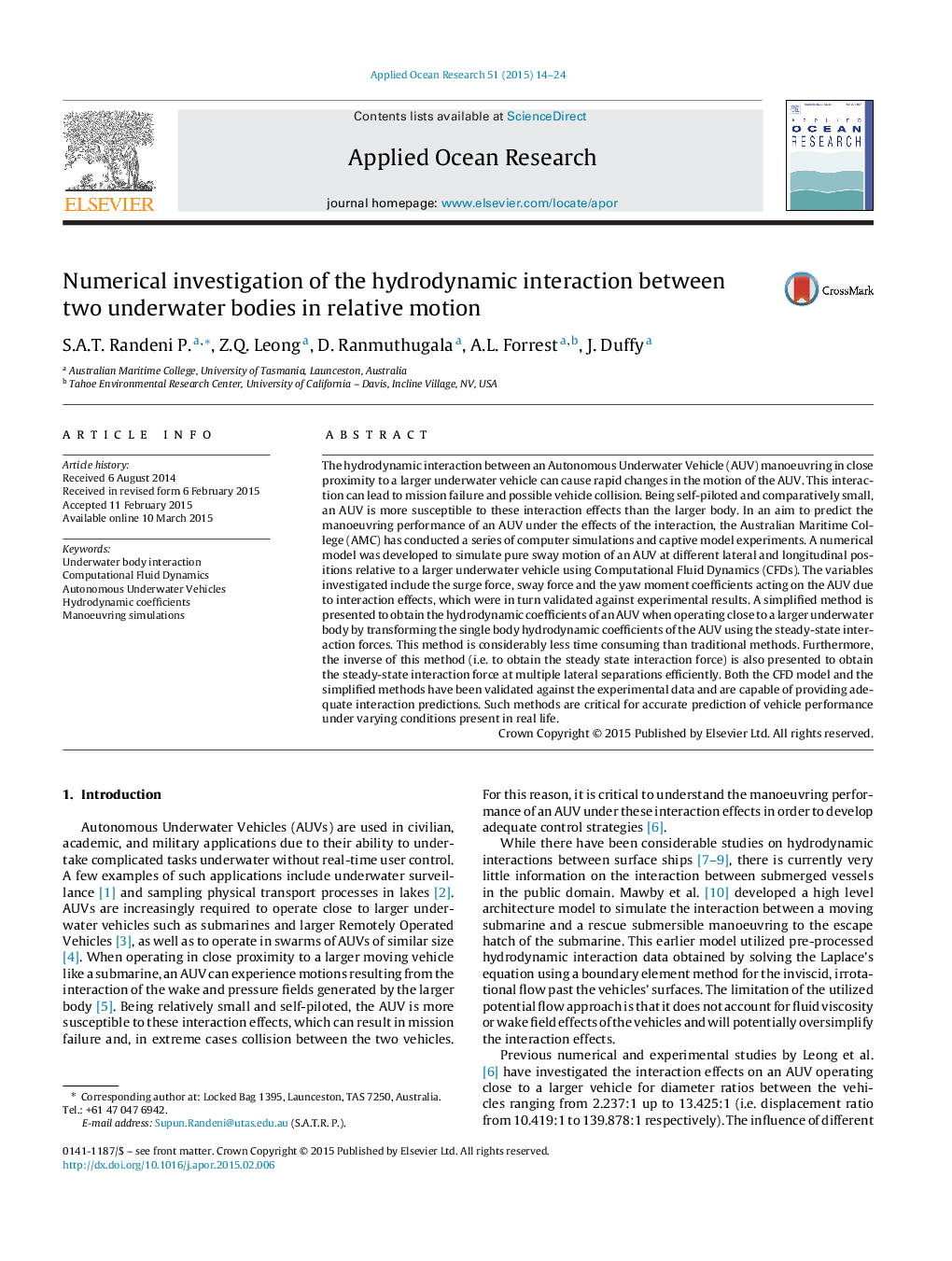| کد مقاله | کد نشریه | سال انتشار | مقاله انگلیسی | نسخه تمام متن |
|---|---|---|---|---|
| 1719967 | 1520252 | 2015 | 11 صفحه PDF | دانلود رایگان |
• Simulated the pure sway motion of an AUV close to a larger underwater vehicle using CFD.
• CFD model was validated against the results from towing tank experiments.
• The variation of underwater body interaction against the relative body separation.
• A simplified method to derive hydrodynamic coefficients of an AUV when operating close to a larger vehicle.
• A method to obtain steady-state interaction force at multiple lateral body separations.
The hydrodynamic interaction between an Autonomous Underwater Vehicle (AUV) manoeuvring in close proximity to a larger underwater vehicle can cause rapid changes in the motion of the AUV. This interaction can lead to mission failure and possible vehicle collision. Being self-piloted and comparatively small, an AUV is more susceptible to these interaction effects than the larger body. In an aim to predict the manoeuvring performance of an AUV under the effects of the interaction, the Australian Maritime College (AMC) has conducted a series of computer simulations and captive model experiments. A numerical model was developed to simulate pure sway motion of an AUV at different lateral and longitudinal positions relative to a larger underwater vehicle using Computational Fluid Dynamics (CFDs). The variables investigated include the surge force, sway force and the yaw moment coefficients acting on the AUV due to interaction effects, which were in turn validated against experimental results. A simplified method is presented to obtain the hydrodynamic coefficients of an AUV when operating close to a larger underwater body by transforming the single body hydrodynamic coefficients of the AUV using the steady-state interaction forces. This method is considerably less time consuming than traditional methods. Furthermore, the inverse of this method (i.e. to obtain the steady state interaction force) is also presented to obtain the steady-state interaction force at multiple lateral separations efficiently. Both the CFD model and the simplified methods have been validated against the experimental data and are capable of providing adequate interaction predictions. Such methods are critical for accurate prediction of vehicle performance under varying conditions present in real life.
Journal: Applied Ocean Research - Volume 51, June 2015, Pages 14–24
